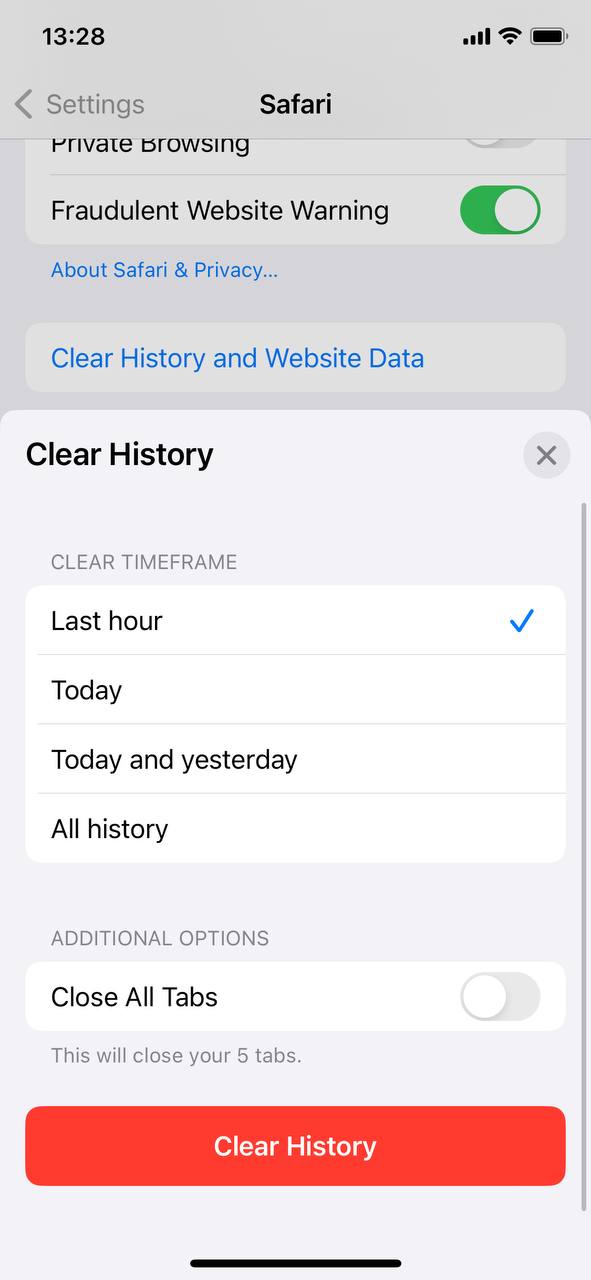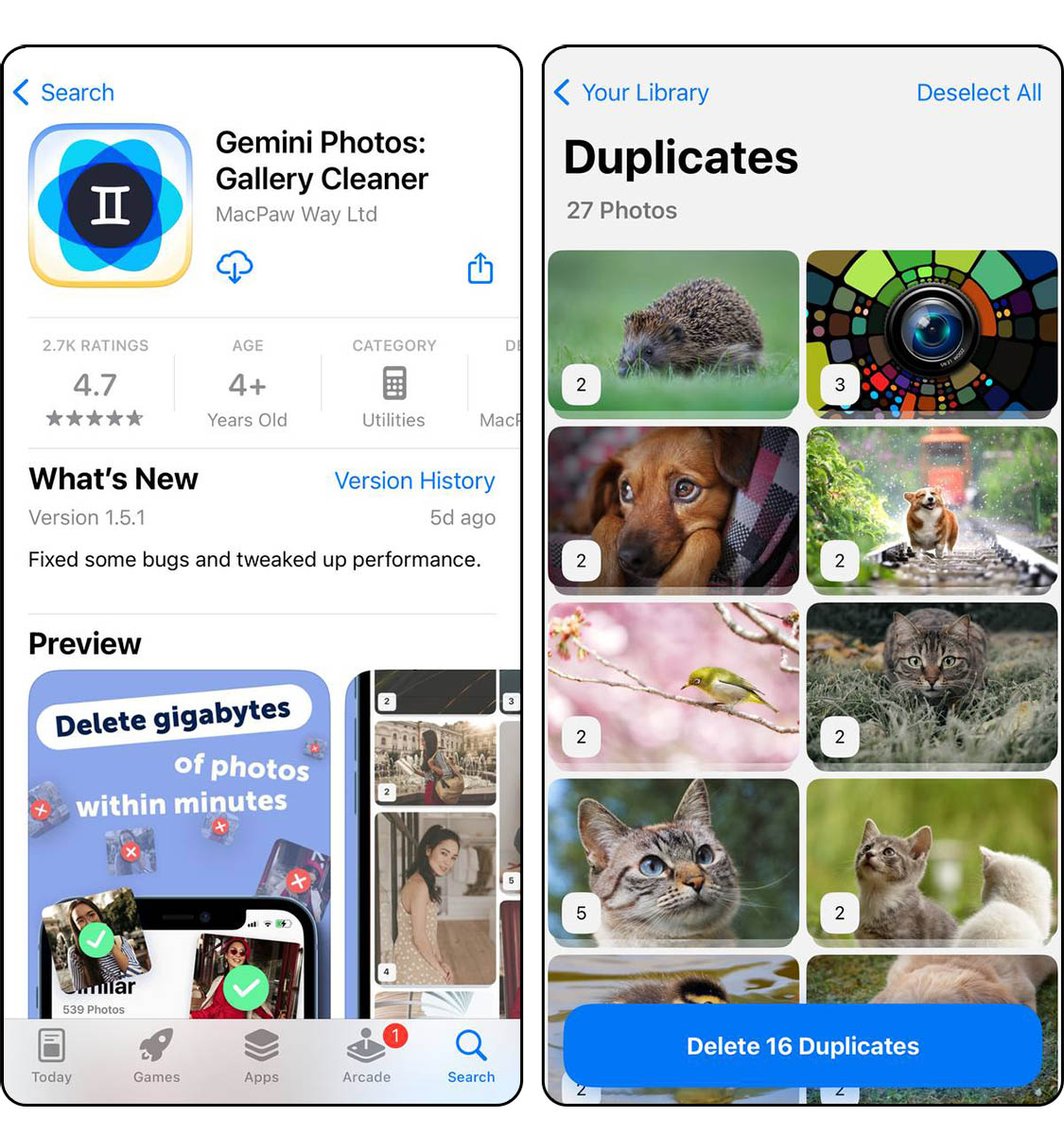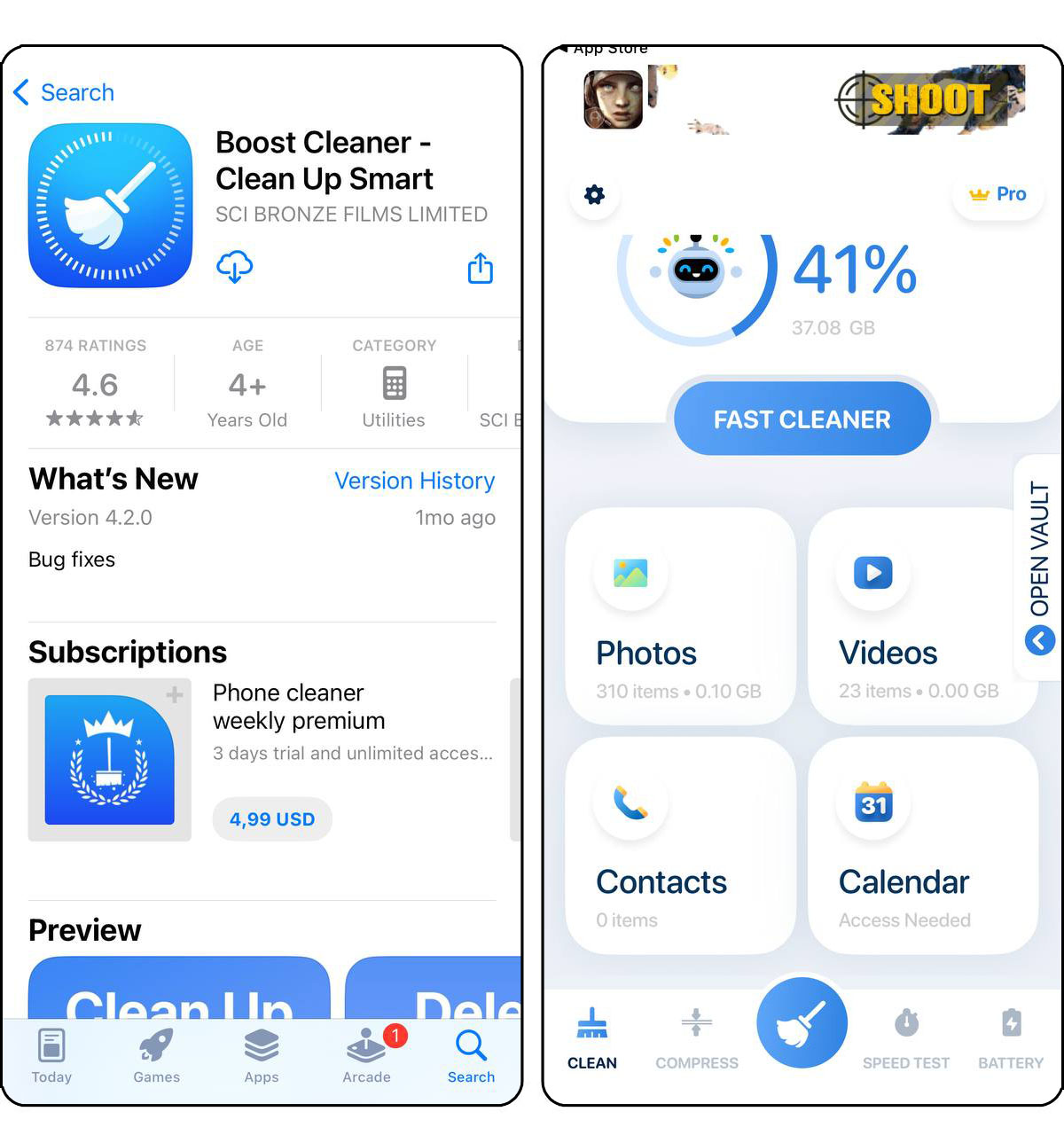How to Get More Storage on iPhone Running iOS 17
Is your iPhone constantly running out of space? Whether you’re trying to download new apps, capture that perfect photo, or simply update your iOS, having insufficient storage can be a major inconvenience. In this article, we will guide you through various proven methods to increase your iPhone’s storage capacity—for free. You’ll learn not only how to manage your existing space more efficiently but also how to leverage features within your device to maximize storage without spending extra money. From optimizing your photo storage to using cloud services and managing large files, we’ll cover all the steps you need to free up space and keep your iPhone running smoothly.
Let’s start by looking at one of the most effective ways to get more storage on your iPhone without any cost: optimizing your photo storage.
1. Optimize Photo Storage
For many iPhone users, photos and videos are the largest consumers of storage space. Fortunately, Apple offers a built-in feature to help manage this efficiently:
Optimize iPhone Storage: This setting allows your iPhone to replace full-resolution photos and videos with smaller versions on your device while keeping the originals in iCloud.
Steps to Enable “Optimize iPhone Storage”:
- Open the Settings app on your iPhone.
- Scroll down and tap on Photos.
- You will find an option labeled Optimize iPhone Storage. Tap to enable it.

By enabling this feature, you get more iPhone storage while still having access to your photos and videos via iCloud whenever you need them. This method is especially useful if you have a large camera roll and are looking to how to add more storage to your iPhone without deleting any memories.
Next, let’s look at how managing installed applications can help you further increase your storage capacity.
2. Manage Installed Applications
Applications can take up a surprising amount of your iPhone’s storage space, especially if they store data, cache, and other information. Here’s how you can manage and remove apps that you no longer use or need:
Steps to Manage Applications:
- Go to Settings > General > iPhone Storage.
- You’ll see a list of all your apps, along with the amount of space each one uses.
- Tap on any app you don’t use often. You will have two options:

- Offload App: This removes the app but keeps its data, allowing you to reinstall it later without losing data.
- Delete App: This removes the app and all its related data.
Consider offloading apps that you use occasionally but not frequently, as this will free up space while preserving the app’s data. This method is effective if you’re wondering how to get more space on your iPhone without losing functionality.
In the following section, we will explore another effective method to get more storage space: cleaning up old messages and attachments.
3. Clean Up Old Messages and Attachments
Old messages and attachments can accumulate over time and take up a significant amount of storage on your iPhone. Here are the steps to clean these out and free up more space:
Steps to Clear Old Messages and Attachments:
- Open the Settings app on your iPhone.
- Navigate to General and then to iPhone Storage.
- Scroll down and tap on Messages.
- Look for the option titled Review Large Attachments. Tap it to see a list of all large files stored within your messages.
- Swipe left on items you want to delete and tap Delete to remove them.

This method is especially useful if you’re trying to increase your iPhone storage capacity for free by removing items that are not only large but often forgotten. By regularly cleaning up these areas, you can maintain more available storage space.
Moving forward, we will examine how to effectively clear your iPhone’s browser cache and cookies, another excellent strategy to get more storage without paying.
4. Clear Browser Cache and Cookies
Web browsers on your iPhone store temporary data such as cache and cookies, which can significantly increase over time and occupy valuable storage space. Clearing this cached data is a critical step in maintaining your device’s storage efficiency. Here’s how you can free up space by managing browser data:
Steps to Clear Cache and Cookies:
- Open the Settings app on your iPhone.
- Scroll down and select Safari, or the browser you use most frequently.
- Tap on Clear History and Website Data.
- Confirm your selection to remove all browsing history, cookies, and cached files.

By performing these steps, you not only get more storage on your iPhone but also enhance the privacy and speed of your device. This process is straightforward and can be repeated as often as needed to keep your browser lean and efficient.
Next, we will discuss the importance of deleting and managing large media files, which is another effective method to free up storage on your iPhone.
5. Delete and Manage Large Media Files
Large media files such as high-resolution photos and videos often consume the bulk of storage on your iPhone. Proactively managing these files can significantly free up space and improve your device’s performance. Here’s how to tackle this storage challenge:
Steps to Manage Large Media Files:
- Open the Photos app on your iPhone.
- Tap on Albums and then scroll down to Media Types.
- Here, you can view categories like Videos, Selfies, and Bursts, which typically take up more space.
- Select any large files or videos you no longer need. Tap Select in the top right corner, then tap each item you wish to delete.
- Tap the Trash icon, then confirm by selecting Delete Items.
By regularly reviewing and managing your media files, you can get more storage without paying for additional space. This routine is crucial for maintaining an optimal storage balance and ensuring your iPhone runs efficiently.
In the subsequent section, we will explore how using cloud services for backup and storage can further enhance your iPhone’s storage capacity.
6. Use Cloud Services for Backup and Storage
Cloud services offer a practical solution to expand your iPhone’s storage without the need for physical upgrades. By storing files remotely, you can free up significant space on your device while keeping your data accessible and secure. Here’s how to make the most of cloud services like iCloud to manage your iPhone storage:
Expand iCloud Usage Beyond Photos:
- Document and File Storage: Utilize iCloud Drive to store documents, presentations, and other files that don’t need to be accessed daily. Move files from your iPhone storage to iCloud Drive through the Files app.
- Backup Entire iPhone: Regularly back up your iPhone to iCloud. This not only ensures your data is safe but also allows you to restore information easily to the same or a new device without taking up physical storage space on your iPhone.
- Manage App Data: Choose which apps can store their data in iCloud. This feature is particularly useful for apps that accumulate data over time, such as messaging apps and productivity tools.
- Email Storage: If you use Apple’s Mail, consider managing how emails are stored. Older emails can be moved to iCloud, clearing space on your device.
Utilizing iCloud or other cloud services not only helps you increase iPhone storage capacity for free but also provides a secure backup for your important files, ensuring that they are protected even if your device is lost or damaged.
Finally, we will discuss external storage options and additional tools that can help you further extend your iPhone’s storage capabilities.
7. Utilize External Storage Solutions
For iPhone users who need to manage large files or want an alternative to cloud storage, external storage solutions provide a flexible option. These tools are ideal for offloading content from your iPhone, thus freeing up significant space without having to delete precious data.
Types of External Storage for iPhone:
- Flash Drives for iPhone: Portable flash drives specifically designed for iOS devices can connect via the Lightning port. These drives allow you to easily transfer photos, videos, and other files off your iPhone.
- Wireless External Drives: These devices offer storage and transfer capabilities through a Wi-Fi connection, eliminating the need for cables. They are perfect for transferring large amounts of data like video projects or extensive photo collections.
Using external storage not only helps you increase your iPhone storage capacity for free but also keeps your data portable and accessible across multiple devices. This method is particularly useful for users who frequently manage media files or need additional backup options beyond cloud storage.
Next, we will delve into additional tools and apps that can further assist in optimizing your iPhone’s storage management.
8. Consider Additional Storage Management Tools
Aside from external storage solutions, there are several third-party apps that can enhance your iPhone’s storage management by helping to identify and clear unnecessary data. These apps are designed to streamline the process of cleaning and organizing your device’s storage.
Recommended Storage Management Apps:
- CleanMy®Phone: This app is particularly effective at finding and removing duplicate photos, large video files, and seldom-used apps that consume a lot of space.
- Easy Cleaner: Ideal for photographers or anyone with a large photo library, this app helps sort and delete redundant or unnecessary photos efficiently.
- Boost Cleaner: A versatile tool that not only helps clean duplicate photos and videos but also manages contacts and other data to ensure your iPhone operates at optimal efficiency.



Integrating these tools into your routine can help you get more storage without paying for additional cloud subscriptions or physical storage devices. They provide a convenient way to keep your iPhone clean and running smoothly, ensuring that you always have enough space for what matters most.
FAQ
- Open the Settings app.
- Tap General.
- Select iPhone Storage.
This section will display a bar graph showing how much storage you’ve used and what’s left. It also lists how much space each app and its data are taking up.
- You frequently run out of space and have maximized all possible storage optimization strategies.
- You need to store large files locally due to your specific needs, such as professional photography or video editing.
- You prefer having easy access to all your apps and media without relying on cloud services or external storage.
- You can restore your data from an iCloud backup or from a backup on your computer via iTunes or Finder. This process will transfer your apps, settings, photos, and other data to your new iPhone.
- If you use iCloud, your data like contacts, calendars, notes, and iCloud Photos remain in the cloud and sync automatically to your new device once you log in with your Apple ID.
iCloud Storage is cloud-based storage provided by Apple. It’s used to back up your device and store data such as your photos, videos, documents, and backups securely in the cloud. iCloud storage can be accessed from any device where you are logged in with your Apple ID, making it useful for data recovery and syncing across multiple devices.
Conclusion
Maintaining sufficient storage on your iPhone is achievable by utilizing a combination of built-in features, external devices, and third-party apps. These strategies enable efficient management of your device’s storage capacity, helping to optimize performance and extend its usability without the need for costly upgrades. By regularly implementing these methods, you can ensure your iPhone remains functional and efficient, keeping storage issues well managed.

